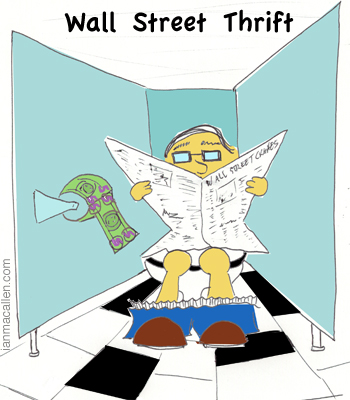Blogging, a favorite
subject of bloggers, is back in the blogosphere after being deconstructed and analyzed in
The Atlantic. Patrick, in quintessential blogger fashion,
explains the whole thing so no one has to bother reading the actual print story. In case even his distillation is still too monotonous, I'll summarize the whole thing: bloggers should sound like incoherent twelve-year-olds because no one will take bloggers seriously anyway, and print journalism rocks.
The analysis is fundamentally flawed mostly because it begins with the assumption that a blog is still true to the etymological roots. True, the term blog might refer to a Web Log. But just as blogs themselves are instantaneous and ephemeral in their nature, so is the term already outmoded. Blogs aren't inferior to
real journalism; they are the only journalism.
A blog is, in its most elemental definition, merely a descriptive way of organizing content; specifically, a blog organizes information in reverse chronological order without regard to relevance, importance or subject. Those J-schoolers obsessed with the inverse pyramid are probably flipping their shit right now.
A blog is not defined by its content or authority or intent, but simply by the structure of its content.
Consider for a moment the printed newspaper. What makes a newspaper? Its not accuracy, since we would consider both the New York Times and the New York Post newspapers, and arguably one is far less accurate than the other. The content varies too, with one paper offering insightful investigative journalism, the other sensationalist headline news. Sure, maybe you could argue the Post is a tabloid, not a newspaper. But extend the comparison to say The Asbury Park Press, or The
Bergen Record-- far less authoritative than the New York Times. And even the intent of the author fails to define a newspaper. The Onion is a printed newspaper, but the intent is hardly to inform readers of the news. Satirical news may not report facts, but still the printed Onion is a newspaper.
The New York Times might arguably be the standard bearer of journalism (and considering
the fun they are having there, the state of printed journalism might not be as grand as we have been lead to believe). But a Newspaper, or The Newspaper, is not the same as The New York Times. Newspapers vary in quality, accuracy, intent, and readership just as blogs do.
But then what does make a newspaper; how does a reader know they are reading a newspaper, for instance, and not a magazine, or a blog. A newspaper is defined by the structure of its content, just as blogs are. Even poorly edited newspapers share a common method of organizing information-- the most important information in the front or on the cover, with the less relevant information buried in the middle. The post's Page 6 maybe famous, but its still on the sixth page and not the cover because the information provided there is far less important than fear mongering headlines that sell copy.
A blog never considers the relative significance of content. Those stories that might be considered more important face the same relegation as any other story with each subsequent post. On a blog, A market crash or terror attack in the morning could be supplanted that afternoon by Paris Hilton. But that's the whole point of a blog. In a world that operates 24 hours a day, where the internet is always on, where 24/7 news channels hum along whether or not anybody is watching, a blog provides the immediate gratification of the here and now. See this! Read this!
If a blogger reformatted a website to organize content in the way the nytimes.com handles news-- that is giving 'important' stories greater prominence-- that blogger wouldn't gain credibility just because they adopted the organizational structure of a newspaper's format. Similarly, nytimes.com blogs aren't less relevant because they publish according to a chronological hierarchy.
Blogs are dead. Or at least the relationship between the term "Web Log" and "blog" is dead. The term blog, as quickly as it manifested, has been reinvented. It no longer signifies the incoherent thoughts of a marginalized bald white guy in grandmother's basement rambling on about politics and society and blogging. Instead, a blog has become something more. It has supplanted an outmoded medium that ineffectively delivers the news. Just as the Post is still a rag sheet and the Times the paper of record, there are good blogs and bad blogs, but the term does not necessarily mandate a specific style, an informality of words. James Joyce, were he alive, could be just as coherent as a blogger as he could be as a novelist; the format does not dictate the voice.
The era of print has passed. No one, of course, wants to hear that they have become irrelevant. If though, print masters are concerned of the decline of culture, the demise of journalism, the end of days-- then perhaps they should look introspectively. Blogs are not the bastard cousins of newspapers but simply the natural evolution of the printed word.
Labels: Blogging



